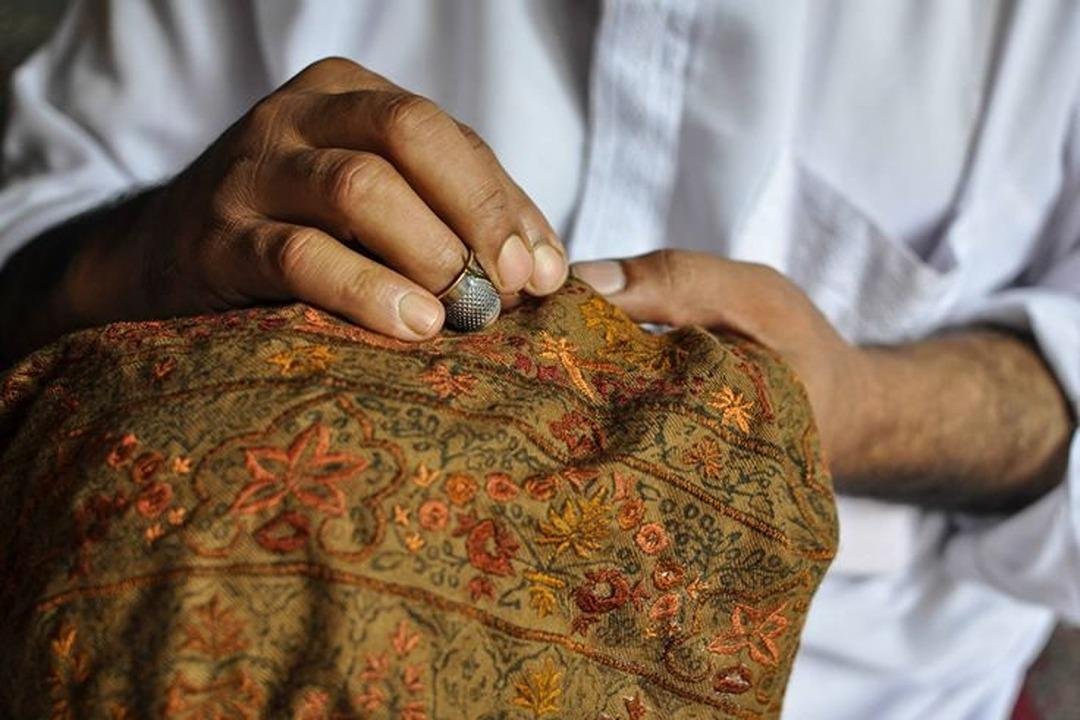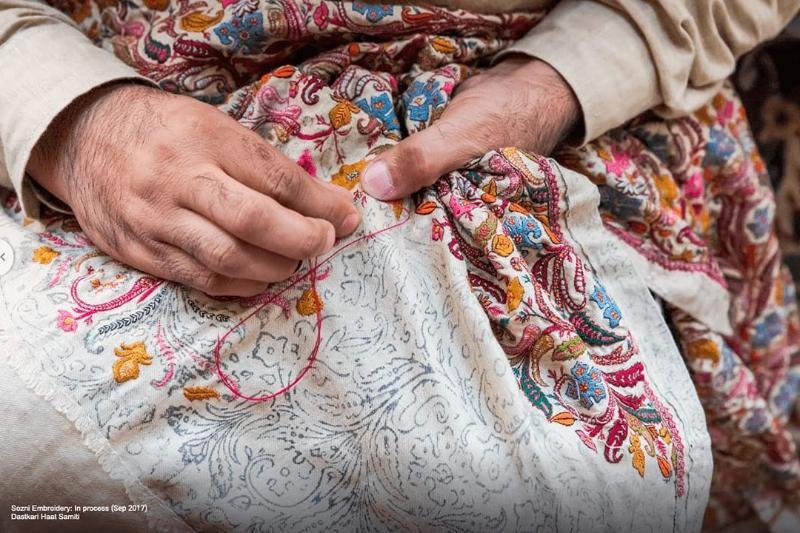What is Sozni Embroidery?
Sozni Embroidery is a complicated kind of sewing art that has been practiced in the beautiful Kashmir valley which lies in Northern India. Sozni, one of the established names among different embroidery methods in the world, is famed for its refinement and sophistication.

( Source: Fashion Network )
Sozni embroidery helps in conserving the cultural heritage of Kashmir, it is a tradition that crosses over generations, and families are proud to continue this art form and craft. Sozni shawls and textiles display unprecedented gracefulness and continuity of beauty; hence, they are in great demand as attributes denoting messages such as sophistication and refinement.
Sozni embroidery captures the legacy of centuries and thus deserves to be considered a priceless heritage in terms of textile handwork. It stands out for:
- Unique Needlework: Kashmiri Sozni embroidery is an elaborate, refined needlepoint embroidery found on fabrics such as wool, silk, or Pashmina and carried out with slender needles by dexterous craftsmen.
- Rich in Culture: It is said that Sozni represents the natural inheritance of more than 500 years and has shown the art form and cultural traditions found in the Kashmir valley areas of Northern India.
- Extraordinary Patterns: Floral and paisley designs elaborate in a highly decorative style characterize Sozni as a Kashmiri embroidery technique, they are known for their powerful visual appeal.
- Layered Artistry: The technique is characterized by using fine embroidery to create a tapestry-like appearance on the fabric, giving it an encrusted look, which enhances its depth and richness.
Sozni Embroidery Process
Sozni Embroidery procedure comprises several detailed stages that ultimately result in the development of beautiful embroidered fabrics. Here’s a breakdown of the Sozni Embroidery process:
- Creating Design: First, a skilled artisan makes a design or pattern on paper. This design is used to guide the embroidering process.
- Design Transformation: Such design is then transferred onto the fabric either by tracing or printing. This can be used as a guide by the embroiderer.
- Thread Selection: The artisans carefully select their threads based on color, thickness, and texture also, fine silk or cotton threads are used for such a work.
- Stitching: The major stitch in Sozni embroidery is the satin stitch; it consists of covering that whole area of design with flat, parallel stitches that run along the lines drawn outlining pattern.
- Finishing: Sonzi embroidery starts with the basics of a layout whose details are gradually developed throughout its pattern, making stitches consecutive and precise.
- Washing and Finalisation: When the embroidery is done, they wash off their fabric very carefully in order to ensure there’s no staining. It is dried and ironed to give the finished product’s clean finish.

( Source: Abirpothi )
Challenges Faced by Sozni Artisans
Though Sozni Embroidery is unmatched in beauty, it has potential problems concerning the current age. The difficulty of the craft, as well as its long completion time—sometimes several years for one shawl—influences younger people to stay away from this art form. Moreover, the emergence of mechanized shawls that mimic Sozni’s handiwork puts their handmade quality and worth in jeopardy.
Kashmiri Sozni embroidery isn’t just a craft; it is an epic conveyed by the threads of tradition, resilience, and artistry – like homespun testimonials to the longevity legacy in these parts where there are countless reasons for pride based on vivid histories and rich cultures.
Leave A Comment